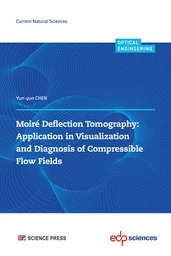Contributors.................................................III
Preface..................................................... V
Introduction .................................................VII
List of Abbreviations.......................................... XIII
CHAPTER 1
Brief History of Spinal Endoscopic Surgery.......................... 1
1.1 History and Development of UnichannelSpinal Endoscopy ......... 1
1.2 History of MED Technique................................. 7
1.3 History of Bichannel Spinal Endoscopy........................ 8
References.................................................. 12
CHAPTER 2
Principles of V-Shape Bichannel EndoscopySystem Design.............. 15
2.1 Keypoints of V-Shape Bichannel EndoscopySystem Design ........ 19
2.2 Composition of V-Shape Bichannel EndoscopySystem ............ 20
2.2.1 V-Shape Channels.................................. 20
2.2.2 Spinal Endoscope.................................. 22
2.2.3 The Use of Trephine................................ 22
2.2.4 The Lengthened Surgical Instruments................... 25
2.2.5 The Water Plugs................................... 26
2.2.6 The Choice of Interbody FusionCages................... 27
2.2.7 Bone Graft Materials and BiologicalFactors .............. 28
2.3 Foraminoplasty and Working CannulaPlacement ................ 28
2.4 Comparison of V-Shape Bichannel EndoscopySystem
and Conventional Unichannel Spinal EndoscopyTechniques ........ 29
2.5 Comparison of V-Shape Bichannel EndoscopicFusion and Unichannel Spinal Endoscopic Fusion....................................... 30
2.6 Comparison of V-Shape Bichannel EndoscopySystem and Unilateral Biportal EndoscopyTechniques.............................. 31
References.................................................. 32
CHAPTER 3
Clinical Applied Anatomy for V-Shape BichannelEndoscopy ............ 35
3.1 General Anatomy of the Lumbosacral Spine.................... 35
3.1.1 Bone Structures of the Lumbosacral Spine................ 35
3.1.2 Connections Between Vertebrae........................ 37
3.1.3 The Spinal Cord and Nerves of theLumbosacral Spine ...... 40
3.1.4 The Vascular Distribution in theLumbosacral Spine ........ 42
3.2 Anatomy Related to V-Shape BichannelEndoscopy Surgical Approaches............................................. 43
3.2.1 Anatomy of the Lumbar IntervertebralForamen ........... 44
3.2.2 Anatomy of the Lumbar Facet Joint.................... 47
3.2.3 The Safety Triangle................................. 48
References.................................................. 49
CHAPTER 4
V-Shape Bichannel Endoscopy Assisted Discectomyand Decompression .... 51
4.1 Application of Type I V-Shape BichannelEndoscopy Decompression Cannula in Lumbar Surgery................................ 52
4.1.1 Structure of Type I VBE DecompressionCannula .......... 52
4.1.2 Indications....................................... 53
4.1.3 Instruments....................................... 53
4.1.4 Position.......................................... 53
4.1.5 Planning......................................... 53
4.1.6 Anesthesia........................................ 54
4.1.7 Establishment of Working Channel forUnichannel Endoscope System.................................. 54
4.1.8 Establishment of Working Channel for TypeI VBE Decompression Cannula.............................. 55
4.1.9 Foraminoplasty with Type I VBEDecompression Cannula ... 56
4.1.10 Discectomy and Decompression........................ 57
4.2 Application of Type II V-Shape BichannelEndoscopy Decompression Cannula in Lumbar Surgery................................ 57
4.2.1 Structure of Type II VBE DecompressionCannula ......... 57
4.2.2 Indications....................................... 58
4.2.3 Instruments .......................................58
4.2.4 Position.......................................... 58
4.2.5 Planning......................................... 58
4.2.6 Anesthesia........................................ 59
4.2.7 The Establishment of the Working Cannula............... 59
4.2.8 Discectomy and Decompression........................ 59
References.................................................. 60
CHAPTER 5
V-Shape Bichannel Endoscopic Lumbar Fusion....................... 61
5.1 Anatomy ..............................................63
5.2 Surgical Instruments andEquipment.......................... 64
5.3 Layout of Operating Room................................. 64
5.4 SurgicalIndications....................................... 65
5.5 Surgical Contraindications................................. 65
5.6 Surgical Methods........................................ 66
5.6.1 Preoperative Preparation and Planning.................. 66
5.6.2 Body Position and Surface Location.................... 67
5.6.3 Operation Process.................................. 68
5.7 Precautions for Operation.................................. 79
5.7.1 Preoperative Imaging Data Analysis andSurgical Planning ... 79
5.7.2 Direction of Puncture............................... 79
5.7.3 Location of Working Cannula......................... 79
5.7.4 How to Use a Trephine to Remove Bones?................ 79
5.7.5 Hemostasis....................................... 80
5.7.6 To Ensure the Fusion of Bone Graft.................... 80
5.7.7 Use of Water Plug.................................. 80
5.7.8 Precautions of Decompression......................... 80
5.7.9 Management of Working Cannula Shift.................. 80
5.7.10 Avoidance of Vascular Injury......................... 81
5.8 PostoperativeTreatment................................... 81
5.9 Prevention of Complications................................ 81
5.9.1 Stimulation and Injury of the OutletRoot................ 81
5.9.2 Injury of Exiting Root and Dural Sac................... 81
5.9.3 Injury of Vessels and Organs in Front ofVertebral .......... 82
5.9.4 Malposition of Interbody Fusion Cage................... 82
5.9.5 Nonunion of Bone Graft .............................83
References.................................................. 83
CHAPTER 6
Clinical Application of V-Shape BichannelEndoscopy ................. 85
6.1 Application of V-Shape Bichannel Endoscopyin Lumbar Decompression ..........................................85
6.2 Application of V-Shape Bichannel Endoscopyin Lumbar Fusion ..... 91
6.2.1 VBE Lumbar Fusion for Lumbar SpinalStenosis ........... 91
6.2.2 VBE Lumbar Fusion for Spondylolisthesis................ 109
6.3 VBE Lumbar Fusion for Lumbar Instability.................... 119
6.4 VBE Lumbar Fusion for Recurrent Lumbar DiscHerniation ........ 122
CHAPTER 7
Lumbar Surgery Rehabilitation................................... 131
7.1 Introduction............................................ 131
7.2 Low Back Pain Clinical Practice Guideline..................... 132
7.3 PreoperativeRehabilitation................................. 134
7.4 Patient Education........................................ 138
7.5 Surgical Complications.................................... 138
7.6 Postoperative Evaluation.................................. 140
7.7 Postoperative Rehabilitation Principles........................ 141
7.8 Postoperative Rehabilitation Protocols........................ 143
References.................................................. 158












